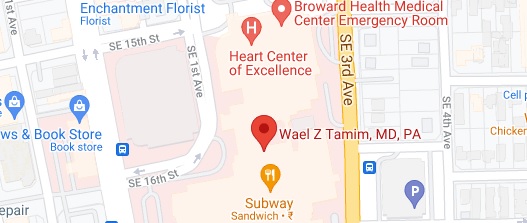What is Peripheral Arterial and Venous Ultrasound?
Peripheral arterial and venous ultrasound is a non-invasive diagnostic procedure that produces images of the arteries and veins in the arms or legs using high-frequency sound waves to detect disease, injury, or other abnormalities.
Indications for Peripheral Arterial and Venous Ultrasound
Peripheral arterial and venous ultrasound may be performed to identify:
- Deep vein blood clots (deep vein thromboses or DVT)
- Dilations in the arteries and veins
- False aneurysm (collection of blood between the 2 outer layers of the artery)
- Enlarged or twisting veins (varicose veins)
- Dissections between the layers of the arterial wall
- Thickening of the arterial wall
- Location of blood vessels in preparation for surgery
- Abnormalities at previous surgical intervention sites.
Preparation for Peripheral Arterial and Venous Ultrasound
In preparation for the procedure:
- Regular medications should be taken on the day of examination
- Lotions or powders should not be applied to your arms and legs the day of examination
- You should wear loose comfortable clothing; also, a gown will be provided.
Procedure for Peripheral Arterial and Venous Ultrasound
- Your doctor/technician will advise you to lie on your back on a padded table.
- A clear gel will be applied on the arms and legs and an ultrasound transducer will be moved over the skin with slight pressure to obtain the images of the arteries and veins.
- The sound waves bounce through the internal tissues which are detected by the receiver to produce real-time images.
- You will be asked to change to different positions in order to obtain a clear image of the individual veins and arteries.
- There may be slight discomfort from the pressure of the transducer on your arms and legs.
- The procedure will take approximately an hour.
Post Procedure for Peripheral Arterial and Venous Ultrasound
- After the test is completed you can wipe off the gel and get dressed.
- You are able to resume your normal activities right away.
Advantages of Peripheral Arterial and Venous Ultrasound
- The ultrasound scan provides detailed information of the veins and arteries including speed and direction of blood flow.
- This is a non-invasive technique so there is minimal risk of complications.
- It is less expensive compared to other advanced imaging procedures such as an MRI or CT scan.
Disadvantages or limitations of Peripheral Arterial and Venous Ultrasound
- There may be difficulty viewing the smaller vessels present deep within the tissue compared to the larger ones.
- The ultrasound beam can be hindered due to the presence of calcification formed inside the blood vessels.


